Abstract
The behavior of a single biological cell in a rotating electric field is investigated both theoretically and experimentally. The torque acting on the cell is calculated. The dependence of the torque on electric cell properties (the dielectric constants, the conductivities, and the surface charges of the cell components) and the field frequency is discussed. The dependence of the rotation velocity on the field frequency shows a typical resonance behavior. It is discussed in which manner the single rotation extrema are related to the different homogeneous cell compartments (cytoplasm, cell membrane, and cell wall). It is shown that the cell surface charge shifts the resonance frequency and influences the absolute value of rotation velocity.
Full text
PDF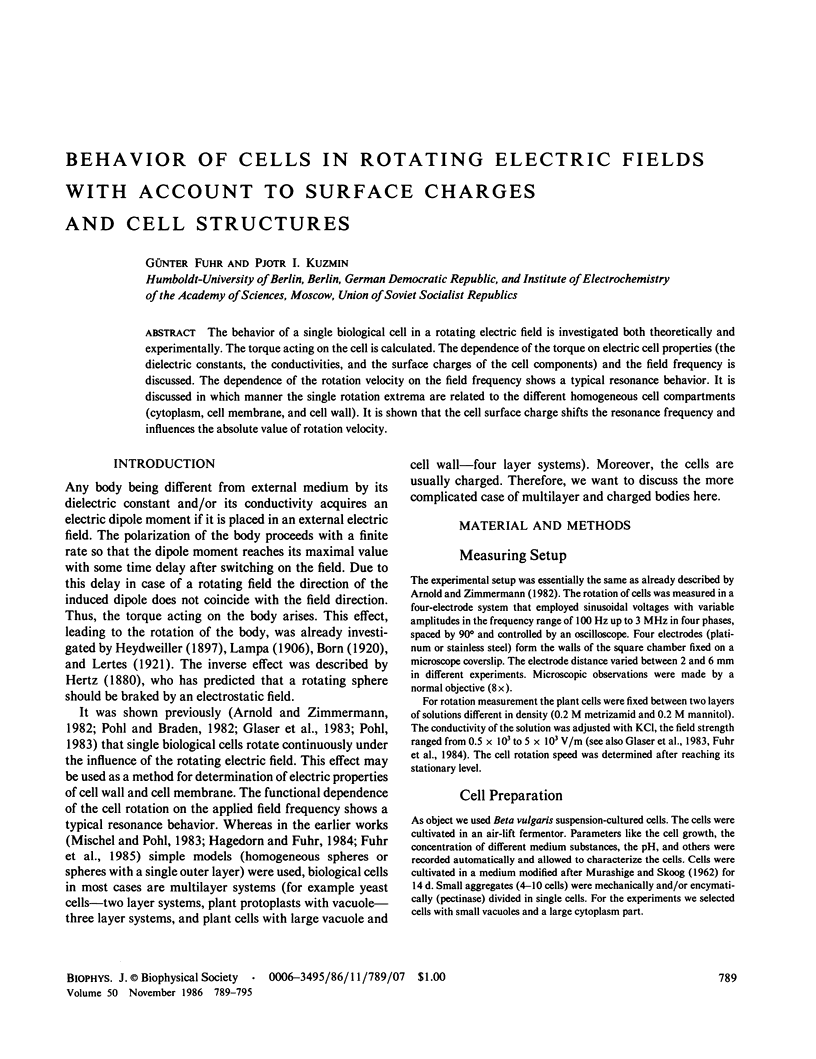
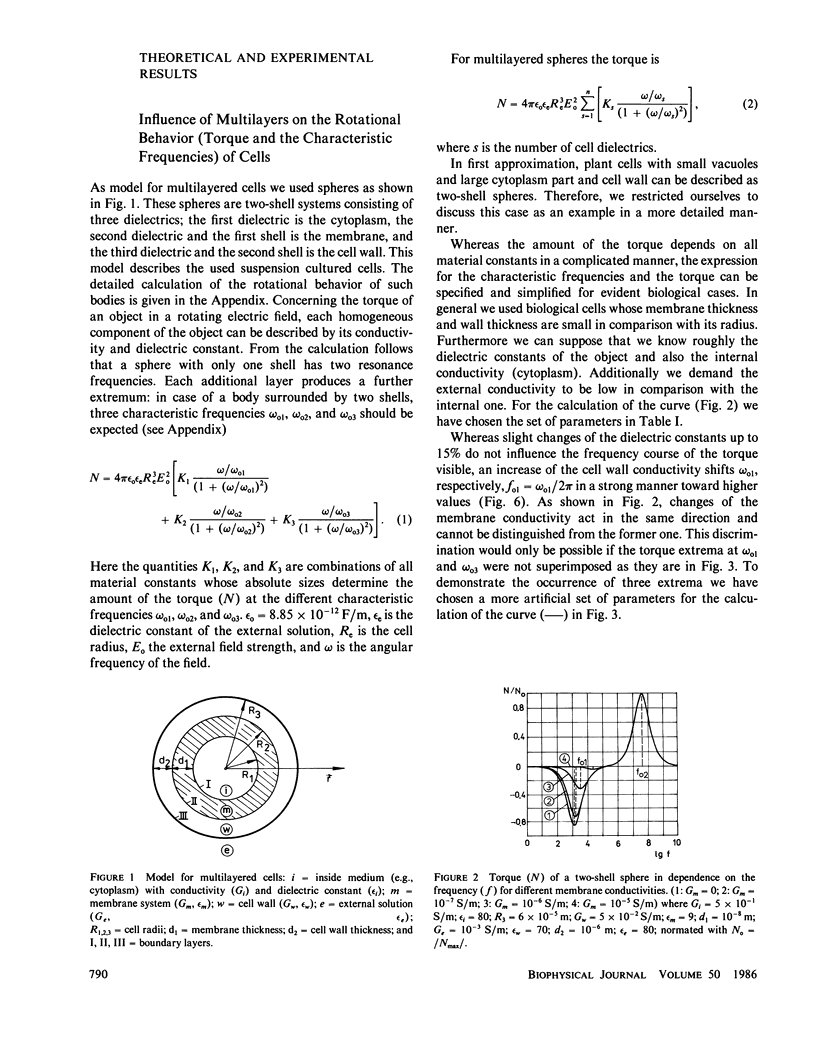
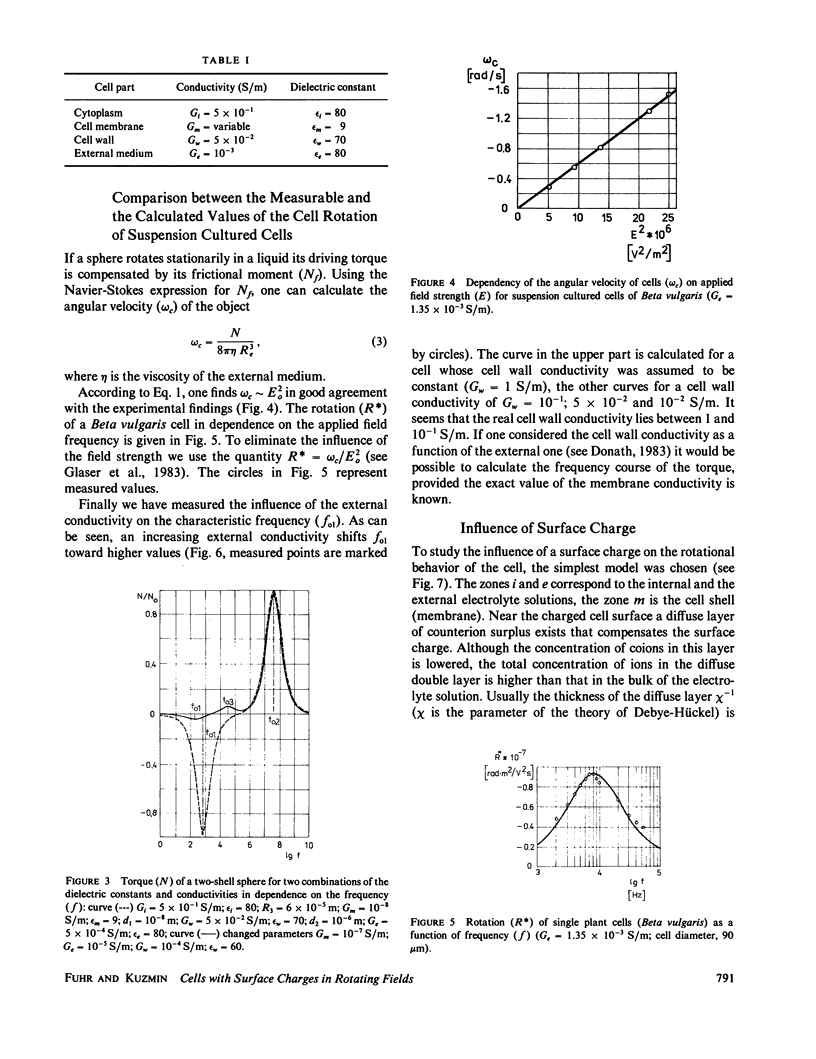
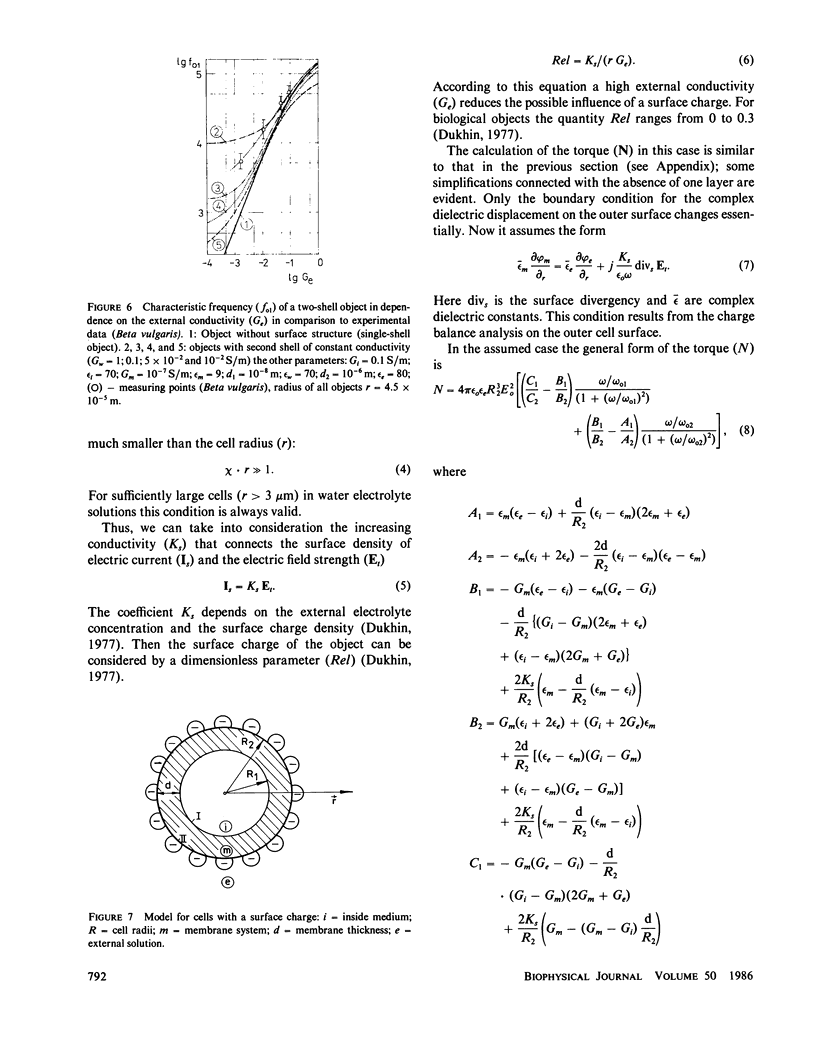

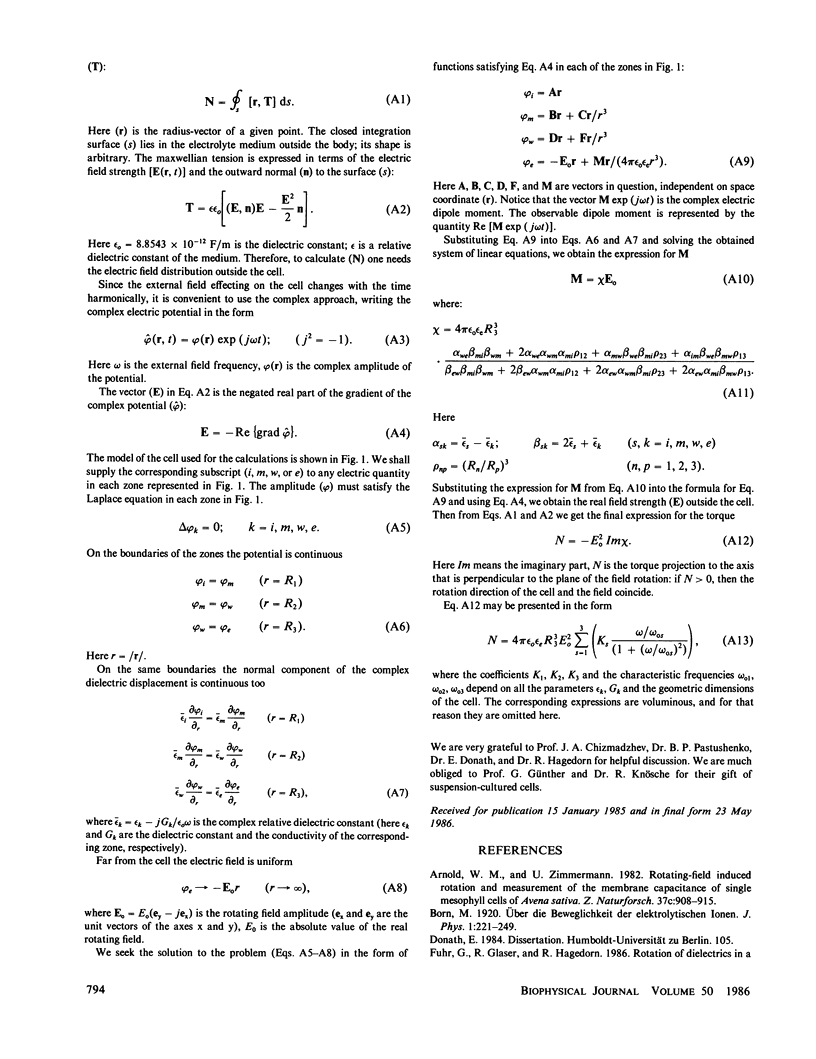
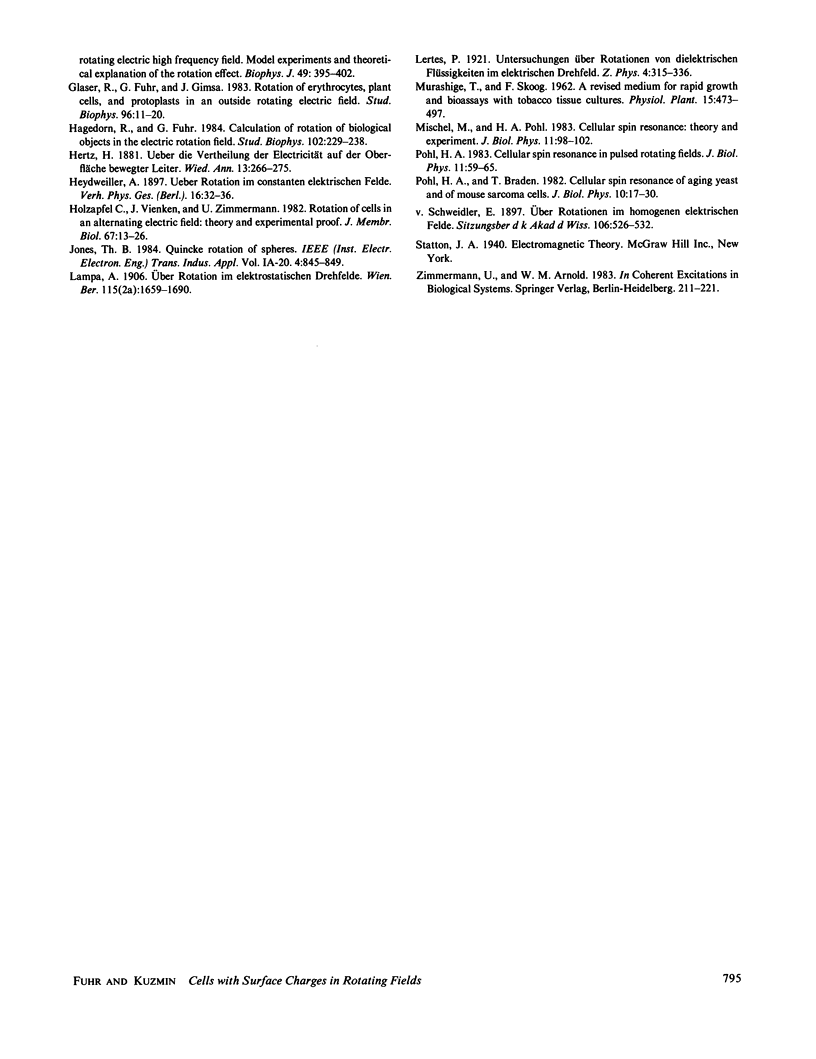
Selected References
These references are in PubMed. This may not be the complete list of references from this article.
- Fuhr G., Glaser R., Hagedorn R. Rotation of dielectrics in a rotating electric high-frequency field. Model experiments and theoretical explanation of the rotation effect of living cells. Biophys J. 1986 Feb;49(2):395–402. doi: 10.1016/S0006-3495(86)83649-9. [DOI] [PMC free article] [PubMed] [Google Scholar]
- Holzapfel C., Vienken J., Zimmermann U. Rotation of cells in an alternating electric field: theory and experimental proof. J Membr Biol. 1982;67(1):13–26. doi: 10.1007/BF01868644. [DOI] [PubMed] [Google Scholar]


